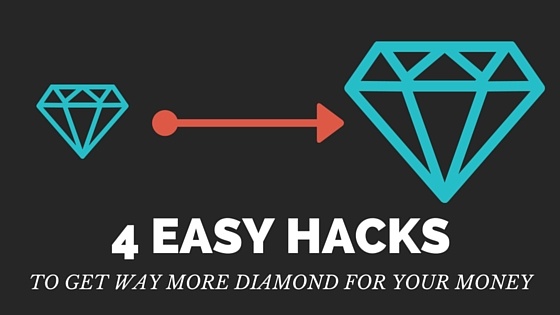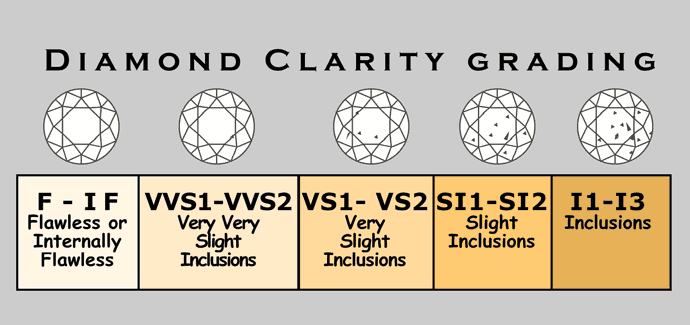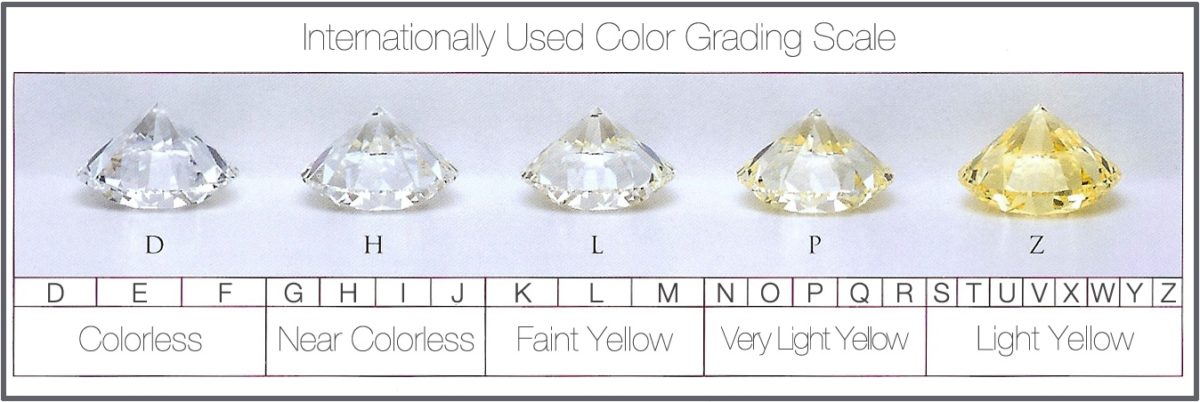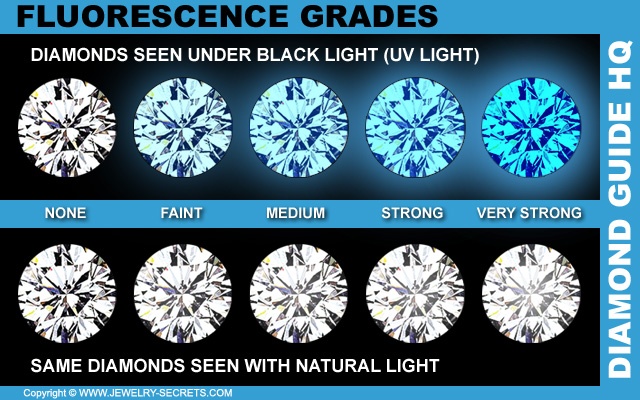
Diamond size matters.
It’s not just sales talk or an unnecessary burden laid on most men who go engagement ring shopping.
Most jewellery designs really look much nicer with a larger diamond.
Some designs actually need a large diamond to work at all. A decent sized diamond is your first step to crafting a visually appealing engagement ring.
Luckily there are 4 simple hacks you use to optimise your diamond purchase in terms of size… without sacrificing on the colour and clarity appearance.
Let’s dig in.
VERY IMPORTANT: Since we’ll be pushing the boundaries in this post it’s important to know the diamonds you are considering have been properly graded by a laboratory such as the GIA (all these diamonds are GIA certified).
We’ll use the story of Paul in this example. Paul decided it’s time to take the next step and ask Amber to marry him. Being quite diamond-naive he decided to hit Google before talking to any jewellers. He studied the 4C’s and after a few articles and visual representations settled on what seemed to be the sweet spot for a diamond. He figures “H” colour will do and any clarity lower than Vs1 better be avoided. With a diamond budget of around R40 000 the best Paul could find was a 0.65ct H VS1 diamond at R36 000.
I feel for Paul… let’s see how close we can get Paul to a 1ct diamond with some basic hacks and tips.
Hack #1 – Drop The Clarity (a little).
*[One of the very misleading diamond clarity visualisations]
The clarity of a diamond is inspected and determined under 10X magnification. Most smaller inclusions visible at 10X magnification are impossible to see with the naked eye.
When buying any diamond under 1,00ct you can drop the clarity requirement to SI1 or even SI2. Make sure that the stone is eye-clean though. Around 5%-10% of SI2 diamonds have inclusions visible to the naked eye. If you’re buying larger than a 1,00ct diamond stick to SI1 and better. It’s easier to spot inclusions and impurities in larger diamonds.
Back to Paul; after inspecting a few SI-clarity diamonds with and without magnification Paul realises that it’s 2016 and no one is walking around with magnifying glasses. What’s clean to the naked eye is clean enough. Paul is happy with SI1 and SI2 clarities.
Hack #2: Keep the Colour in the Goldilocks-Zone.
*[The best diamond colour graph on the internet]
Replicating diamond colour on a computer screen is impossible. The charts you see online don’t offer any real insight and can actually be very misleading. The change in colour as you move from “D” all the way to “Z” happens in tiny increments per colour grade.
The conditions under which diamonds are colour-graded in a laboratory differ greatly from the environment in which diamonds are actually worn and enjoyed. A diamond that has a slight yellow tint under strict and harsh ice-white laboratory conditions will appear very close to colourless when out and about in a ring and on someone’s hand.
Great value is to be found at the lower end of the “Near Colourless” group. We’re talking “I” and “J” colour. Both these colours will appear to be white diamonds when set in a ring. Sure, if you hold a ring set with a “J” colour diamond next to a “D” colour diamond you’ll be able to tell the difference. Is the “D”-colour worth a doubling in price?
Paul viewed a few “I” and “J” colour diamonds set in rings and was quite surprised to see they all appeared… perfectly… white. He says he wished to draw the line at “J”. No lower.
Hack #3: “Faint Brown” diamonds don’t look brown.
There is no category of diamond that we sell out of quicker than the “Faint Brown” kind. Although people are often put off due to the classification’s name, the moment they see a faint brown stone mounted in a ring they’re sold. It’s not brown. Diamonds come in most imaginable colours. The most common shade is yellow. But you also get grey, brown, pink etc.
If the colour of the diamond is on the brown scale it simply means that where a normal ‘J”-colour would have a slight tint of yellow these stones have the same intensity tint of… brown. Which is awesome since most folks are used to looking for yellow in a diamond. The moment the tint is a super light brown the eye tends to miss it. Some very nice eye-foolery going on.
Paul took a look at a few “J”-colour faint brown stones and agrees the brown tint is much harder to pick up than the yellow. Depending on what we have in stock he’ll gladly consider “faint brown” diamonds but still wishes to stick to “J” and higher.
Hack #4: Fluorescence… The Bonus Ball.
*[Nice depiction of diamond fluorescence]
“Fluorescence” refers to a diamond’s tendency to emit a soft colored glow when subjected to ultraviolet light (eg. “black light”). Roughly 30% of diamonds have some degree of fluorescence. Colourless diamonds (D-F) sell at up to a 20% discount if they emit fluorescence as it’s perceived as a slight defect.
BUT…. since the fluorescent glow is usually a blue hue the perceived colour of I-M colour diamonds can actually improve up to a colour or even two where medium or strong fluorescence is present. These lower colour diamonds with fluorescence usually sell at a small premium. Paying a mere 5% premium for a diamond that appears to be up to 2 colours whiter than the certificate states? Yes, please.
We show Paul some L and K colour diamonds with strong blue fluorescence and he can’t believe his eyes. He decides to drop the colour to K, permitting we have one in stock with strong blue fluorescence.
Give us a few minutes, Paul…
After running though a few stones within his new parameters we find Paul a 0,90ct diamond, SI2 clarity and “J”-colour with medium fluorescence. Unfortunately we didn’t have a faint brown 0,90ct diamond in his spec range – but using 3 of the 4 hacks bumped him into the considerably larger 0,90ct diamond size. For a spot-on R40 600 Paul now has a 0,90ct diamond that will look like an “I” colour and is free from any inclusions when viewed with the naked eye. Paul is very, very happy right about now.
We help hundreds of Pauls every month. We’ve spent decades in the diamond trade and most of those years were solely in diamond trading. We live and breath diamonds here at the Poggenpoel Studio.
Find out how we can help you optimize your budget well beyond your expectations. No one will put in more effort you for. That I guarantee.
You can e-mail us on info@poggenpoel.com or get in touch via snapchat if you’re keeping it all a secret: @poggenpoeljewel (give it a try)…



